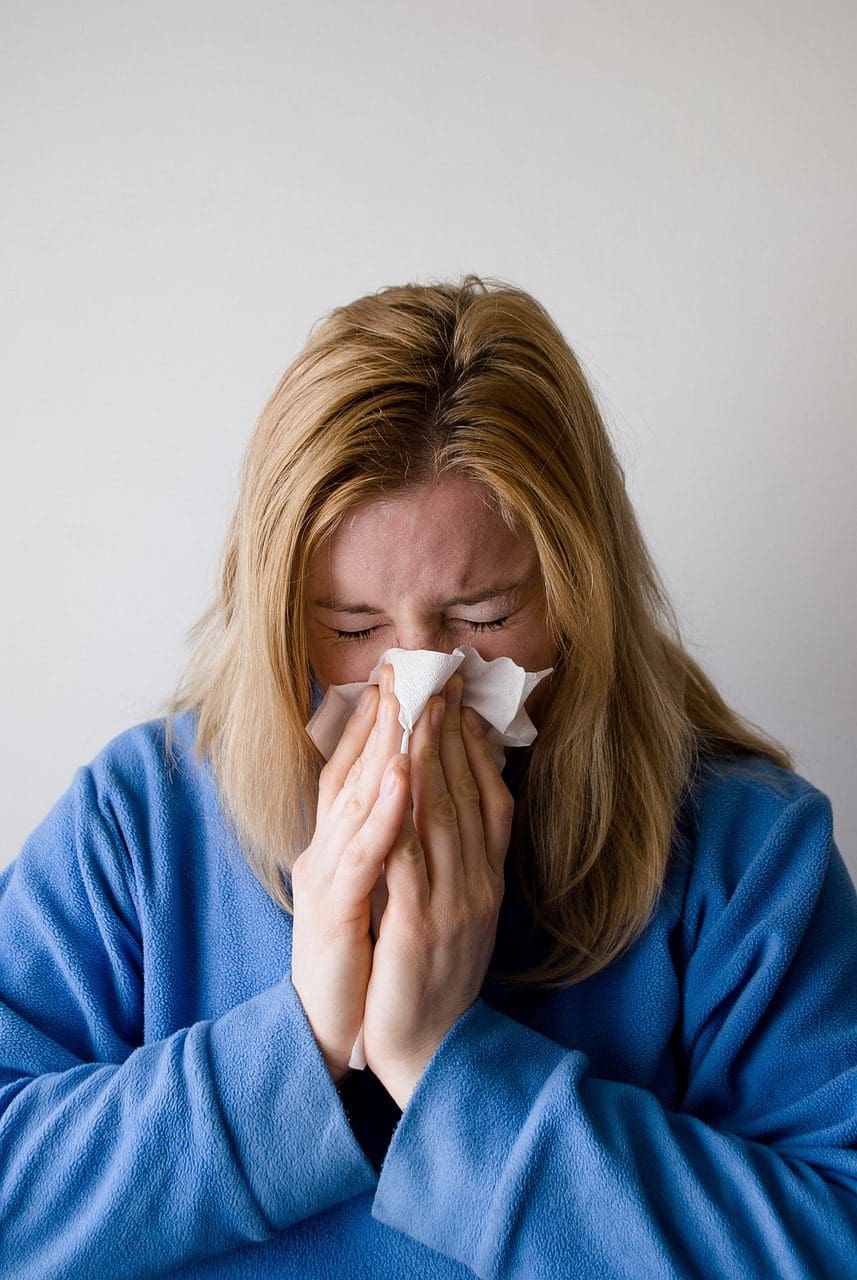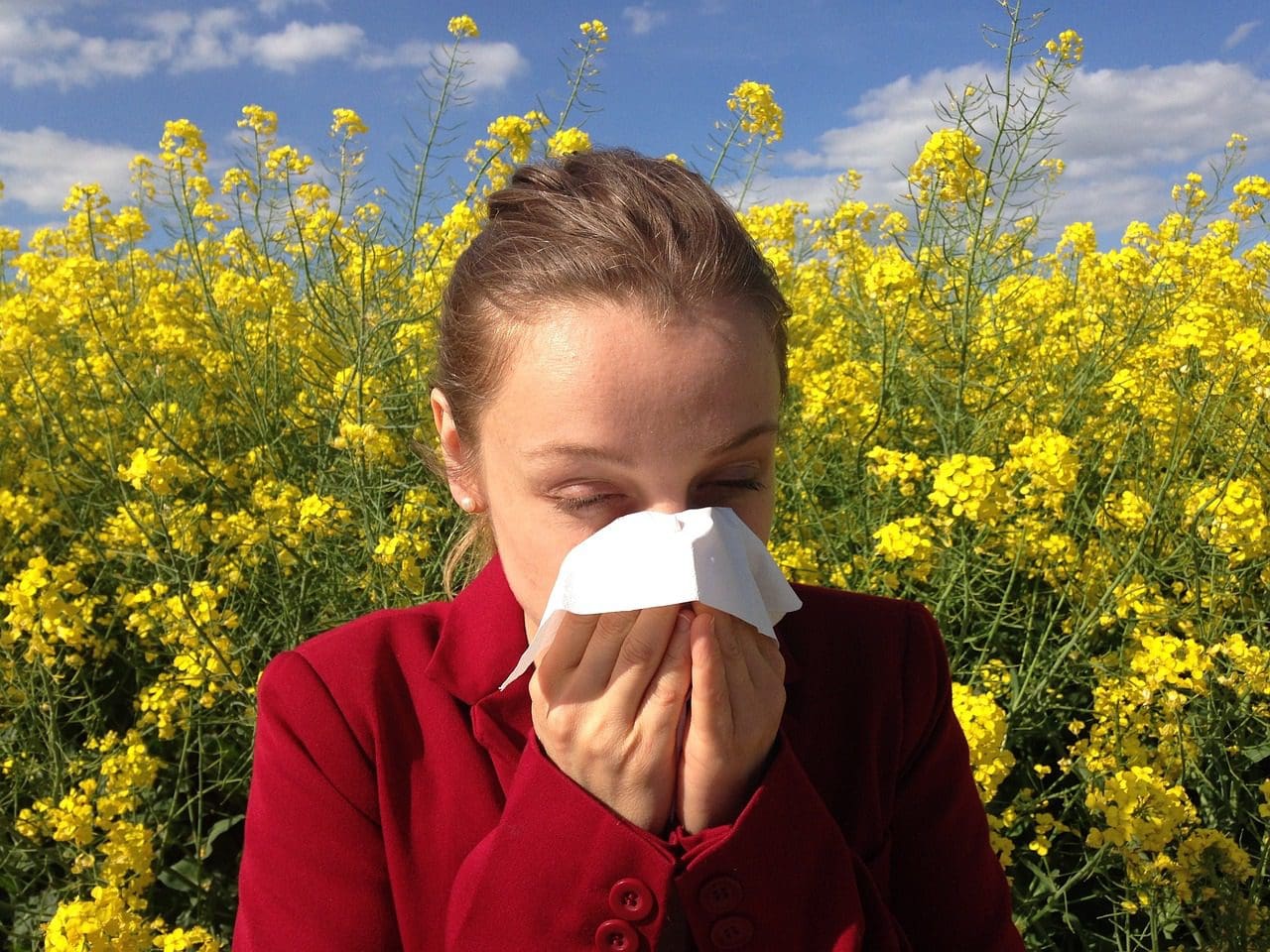The human body is susceptible to the elements around it. Varied things that are either living or non-living can affect our respiratory system in ways that can cause us great difficulties. That’s not it.
If someone who is suffering from a cold and cough comes into close contact with another person, he too can fall sick. While different diseases can affect us, certain naturally occurring elements can weaken us. This is why we have classified various health issues as allergies, flu, common cold, etc.
Key Takeaways
- A viral infection causes flu, while an immune response to an allergen causes allergies.
- Flu symptoms include fever, body aches, and chills, while allergy symptoms include sneezing, itching, and a runny nose.
- Flu can be prevented by getting a flu vaccine, while allergies can be managed with antihistamines and avoiding allergens.
Flu vs Allergy
The difference between Flu and Allergy is that while the former causes fever and other cold-like symptoms, the latter is just a reaction to a living or non-living that can lead to mild headaches or even breathing problems. While the former lasts for days, the latter only lasts for a few hours or a maximum of a day or two. In case your symptoms continue even after a considerable amount of time, it is advisable to consult a doctor.

Flu is caused by viruses or if a person contracts such viruses from an infected person. The body temperature rises quite high, and tremendous body pain is a common symptom of the flu.
It takes about a week to recover completely. However, if one takes a longer time to recover, then immediate medical attention is necessary. Allergy is caused when our body reacts to the elements around us.
Such otherwise harmless elements choke the respiratory system making it extremely difficult for the person to breathe. Allergic reactions can be in the form of continuous sneezing or protrusions on the body that appear like mosquito bites.
Comparison Table
| Parameters of Comparison | Flu | Allergy |
|---|---|---|
| Body temperature | The body temperature can rise extremely high | One will not be down with fever, but a runny nose is quite common |
| Respiratory Problems | It is not quite common | Allergic reactions affect the respiratory tract |
| Causes | Viruses in nature, or if the person comes in close contact with someone who is already affected | Anything a person has negative reactions to |
| Recovery Period | It takes about a week or two to recover completely | A reaction lasts for a few hours or a maximum of a day |
| Frequency of Occurrence | It is seasonal | It can be seasonal or induced by the elements around you that you are allergic to |
What is Flu?
In the early days, a man had to struggle to find a cure for the flu. Countless people in ancient times have succumbed to flues as people were clueless about what it was, what caused it, and what could cure it. However, as advancements were made in the field of science, the reality changed in our favour.
While all the symptoms, such as cough, runny nose, and body pain, are slightly less in the common cold, these symptoms become more pronounced in the flu. Headache with a high fever is very common.
It takes about a week to two weeks to recover from the flu. The body feels exhausted during and after recovering; therefore, it is of paramount importance to focus on a healthy diet during these testing times.
Sometimes the respiratory tract may be affected, too. This requires special attention, and the symptoms should be monitored regularly, and a doctor should be consulted if the symptoms continue for a long time.
Flues are quite common in winters and monsoons. Children and aged ones should be particularly careful! One should focus on building a strong immune system.

What is Allergy?
This is a negative reaction to certain elements of nature. This means that one’s respiratory tract is not strong enough to endure the mere presence of certain objects.
The moment such objects living or non-living, are brought before them, their respiratory tract chokes, thereby making it extremely tough for them to breathe. Allergic reactions have different severities.
It all depends on the person’s receptiveness and endurance to a certain object, whether living or non-living. Also, it is not that everyone is allergic to the same thing.
An allergic reaction that is not too severe can subside within a few minutes, and generally, the symptoms involve continuous sneezing, runny nose, and/or mild headache. Fevers are very rare; however, a mild cough and sneezing are quite common.
If one has an allergic reaction to a certain food item, it is best to visit a doctor without any delay. And if a person is aware of his allergy to a certain food item, then he should avoid its consumption at all times.

Main Differences Between Flu and Allergy
- While flu involves raised body temperature, headache, body pain, and a runny nose, an allergic reaction does not involve body pain or fever. The most common symptom of the latter is continuous sneezing or difficulty in breathing.
- Difficulty in breathing is not very common in the case of flu. However, when it comes to an allergic reaction, difficulty in breathing is extremely common.
- The viruses in the air or coming in close contact with an infected person is the reason why one might be down with flu. In contrast, in the case of an allergy, one is reactive to a certain element.
- It takes about a week or two to recover from the flu completely. On the other hand, an allergic reaction only lasts for a few hours or a maximum of a day or two.
- Flues are quite common in winters and monsoons. Whereas allergies can occur whenever you are in the vicinity of something or happen to consume something that you are allergic to.

- https://journals.co.za/doi/abs/10.10520/EJC155106
- https://www.researchgate.net/profile/Syed-Rizvi-16/publication/340256020_Spring_is_here_now_what_Know_the_Difference_Between_a_Cold_Flu_Coronavirus_and_Allergy/links/5e83c1fc4585150839b2bd99/Spring-is-here-now-what-Know-the-Difference-Between-a-Cold-Flu-Coronavirus-and-Allergy.pdf

The insight provided into the historical aspects of flu and the advances in understanding and treating it is enlightening.
Thank you for explaining the differences between flu and allergies in such a detailed manner. It’s very informative.
I appreciate the comparison table provided. It makes it easier to differentiate between the two.
I completely agree. Understanding the symptoms and causes of each condition is crucial for proper treatment.
I found the in-depth explanation of allergic reactions and their impact on the respiratory system to be very informative.
The detailed explanation of the symptoms and recovery period for both flu and allergies is enlightening.
I found the historical context about flu very intriguing. It’s interesting to see how far we’ve come in understanding and managing such illnesses.
Absolutely, the recovery period is an important factor in distinguishing between flu and allergies.
The detailed description of flu and allergies allows for a comprehensive understanding of these health issues.
I appreciate the focus on symptoms and causes, it aids in early identification and management.
The comparison table is a great addition to the article, providing a clear overview of the distinctions between flu and allergies.
I found the frequency of occurrence and recovery period comparison to be particularly insightful.
The article effectively highlights the key differences between flu and allergies, making it easier to recognize and address these health concerns.
The article’s focus on recovery periods and immune system resilience is particularly noteworthy.
Agreed, the clarity on symptoms and causes is beneficial for general awareness and prevention.
This article offers a comprehensive and detailed comparison of flu and allergies, aiding in better understanding these conditions.
The focus on the differences in body temperature and respiratory problems between flu and allergies is an important aspect of this informative piece.
Indeed, understanding these nuances is beneficial for individuals in identifying and managing their health concerns.
The emphasis on building a strong immune system to combat flu is a valuable takeaway from this article.
I agree, maintaining a healthy diet and lifestyle plays a significant role in preventing flu.
The explanation of allergic reactions and their varying severity is very helpful to comprehend.